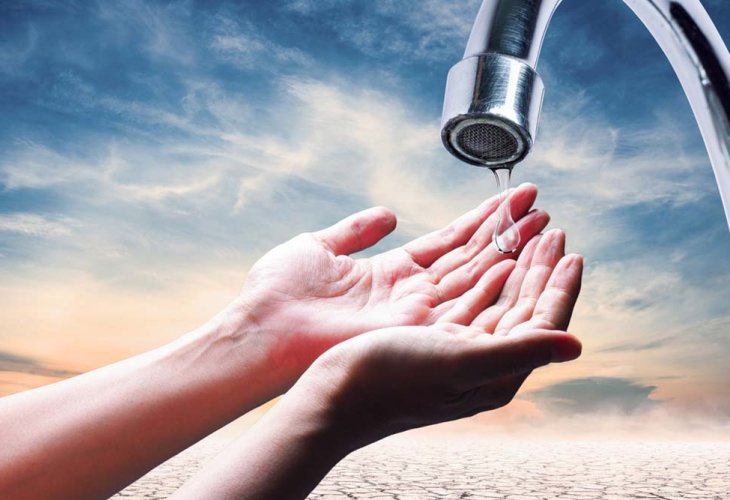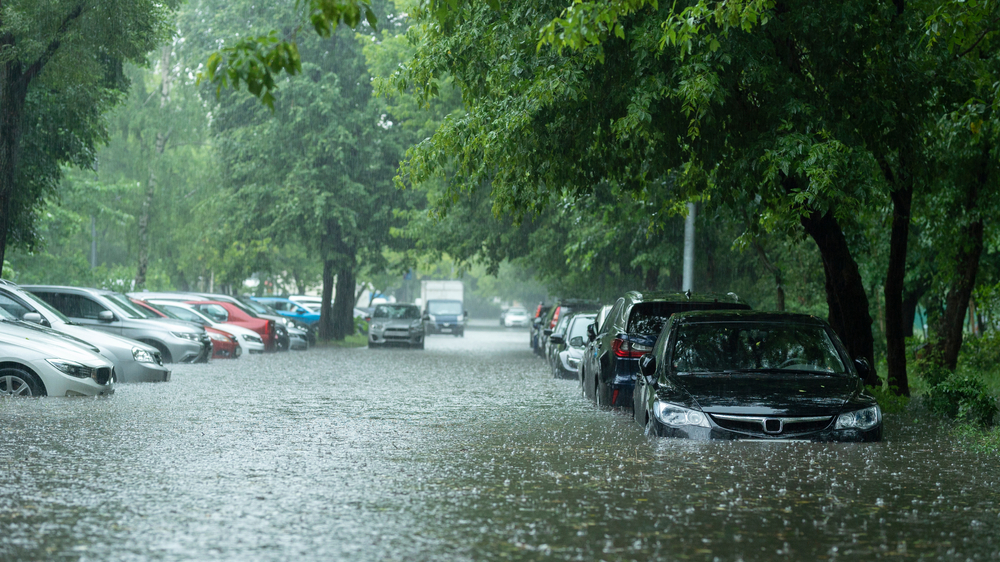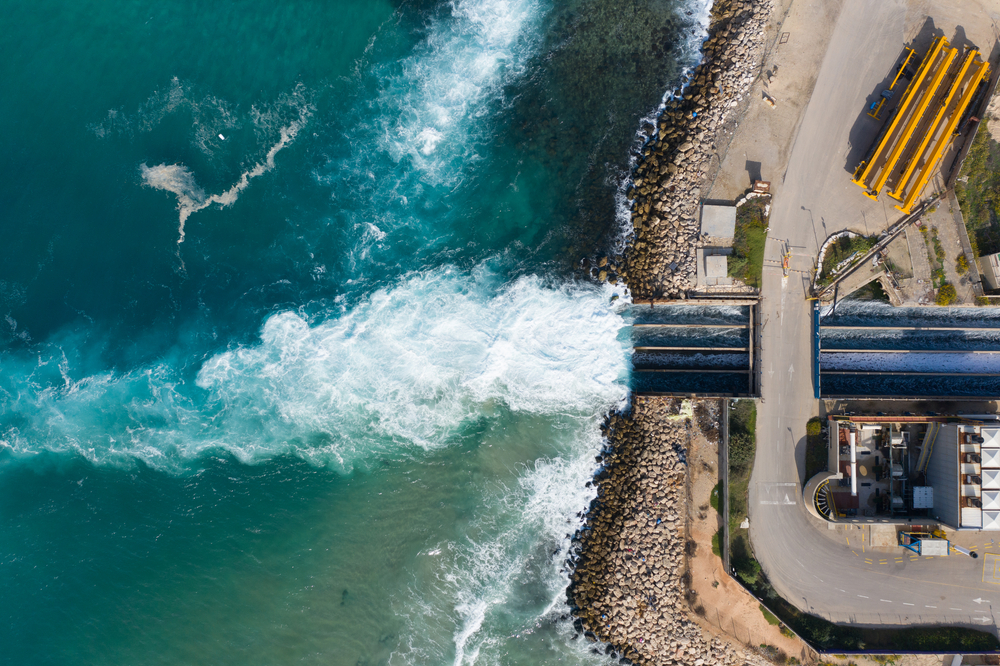We Must Pray: Despite Extensive Desalination, Water Shortage Threatens Israel
Despite the desalination of seawater in Israel and recent years abundant with rain, the observable trend of water shortage continues to threaten water reserves.
 (Photo: shutterstock)
(Photo: shutterstock)Last weekend, after a dry and warm week, winter returned to us and showed its presence across the country. Heavy rains poured from Metula to the Negev, turning streets and roads into actual rivers, the streams burst with strong flow, and the damages were not long in coming. Whether you are among those who rejoice in the rain, enjoy running through its drops and stepping in puddles, or whether you are among those who shudder at the first drizzle and retreat at home with a blanket and tea, it's important to understand how the rain affects our land, and why in an era where we can simply desalinate seawater and use it, it remains very important.
There is no doubt that recent years have been particularly blessed with rains. According to the Hydrological Service Division, 2021 continued a streak of the previous two years, all of which were rainier than average, and one can say that the springs and aquifers (underground water reserves) are grateful from the ground for these rainy years.
However, despite the misleading appearance of abundant rain, Dr. Idan Barnea, an eco-hydrologist specializing in water and streams from the Society for the Protection of Nature, presents a different picture of the climate and water reserves, and warns of necessary steps to stop the current water loss in Israel's natural systems.
Barnea is concerned about the observable trend of water shortages and works in his capacity as the 'Nature Representative' to tackle the expected shortage situations. Moreover, as part of his activities, he is a member of the 'Streams in an Era of Climate Change' project, which aims to improve the condition of streams affected by climate changes and external pressures, such as pumping, stream barriers, and more.
"Climatically, there is a trend of reduction in rainfall amounts," Barnea reports. "In recent years, we have seen a significant shortening of the winter season. A study that examined the last fifty years statistically proved that the winter in Israel shortened by a week."
"Additionally, when rains now fall in a shorter timeframe, meaning a large amount of water in a short time span, it creates more flooding events. Nowadays, built areas covered with concrete and asphalt have increased at the expense of percolation areas and groundwater infiltration, and this too affects water utilization. Beyond that, poor planning in coastal cities and entire neighborhoods built on stream courses along with inadequate drainage infrastructure—all these cause flooding in almost every rain event and damages to infrastructure."
 (Photo: shutterstock)
(Photo: shutterstock)Reservoirs Unrecognize Desalination
Are you familiar with the feeling when summer visits in the middle of winter making us wear sandals, lick ice cream, and wonder what's happening here?
According to Barnea, this is another manifestation of climate change: "Not long ago, we experienced continuous rain throughout most of the winter, without many prolonged rain breaks of a week or more, as we currently experience due to ongoing climate changes. During long dry periods between rain episodes, water from the ground evaporates, the soil dries up, and it takes the rain much longer to infiltrate the groundwater."
Barnea notes that Israel has significant use of reclaimed water compared to many other countries: "In central Israel, where most of the country's population resides, there is a high amount of reclaimed water, sometimes resulting in an excess that leads to their flow in streams. Although these are treated waters and can be used in agriculture for certain crops, their flow in coastal streams harms the ecological systems of the stream due to high concentrations of organic materials and nutrients."
Why do we actually need so much rain if there's abundant reclaimed water and desalinated water?
"Rain is essential to fill the groundwater reserves that we use for drinking. When the groundwater level drops, the spring flow decreases. Damaging groundwater reserves will harm natural water systems, preventing us from maintaining and rehabilitating them for our benefit and for future generations. Although using the desalination system carries environmental costs such as heat emissions and concentrated brine discharge to the sea, it currently provides the best available knowledge for water supply. I believe that new and more ecological technology will develop in the future."
"It is important to emphasize that although it seems as if the abundant rain brings about a significant increase in groundwater levels, the facts on the ground are different. Due to climate changes and the shortened winter season, less rain infiltrates the groundwater. The reduction in the filling of water reserves is greater than the reduction in rainfall amounts."
 (Photo: shutterstock)
(Photo: shutterstock)How does the national water reservoir – the Kinneret – get affected by these climate changes?
"The Kinneret basin is more affected by climate change, with fewer rainfalls occurring in its area. The groundwater reserves in the region, in the Golan and Galilee, fill less, resulting in reduced spring flow and less water reaching the Kinneret. This change does not only result from climate changes; as humans, we contribute significantly to the drop in water quantities due to high water consumption based on natural sources.
"The Kinneret region is unique in its natural water systems, and not for nothing is the Jordan River source area called 'the land of water streams'."
There's Something to Be Done
"The climate issue has gained significant awareness in recent years along with the question of how we handle it. We must take a long-term view of what will happen in the coming decades and remember that rainfall amounts are only going to decrease. In my opinion, we need to encourage the use of alternative water sources for our needs and ensure the release of water to nature. Additionally, in agriculture, we need to consider adjustments, whether by adapting crops that 'consume less water,' like developing carob plantations in the Hula Valley that are drought-resistant, or by reducing development plans for agricultural lands. Although the desalination system currently addresses household needs, agriculture and industry will need to adapt and use less water."
What can be done with all these data? Well, Barnea has several encouraging directions, some of which are already being implemented by various water authorities. "In the previous decade, we experienced a series of five consecutive drought years (2014-2018), and we reached a low point in spring flow and Jordan River flow. As a result, the state decided to implement plans to deal with consecutive drought years by strengthening the desalination array and connecting it to areas disconnected from the national water system.
"Currently, there are two possible alternatives for adding water to the upper Kinneret, in addition to the approved plan to establish reservoirs in the Hula Valley by the Water Authority Council: to connect the area to the national water system or to supply water from the Kinneret itself. The environmental approach we are promoting is that the connection should be via the national system to release water at the basin's head, preserve the Kinneret's health, and also because of the high salinity of Kinneret water (even though Kinneret water is considered fresh, it is about 20 times saltier than Dan water and can cause damage to agricultural lands, springs, and groundwater).
Moreover, the state plans to pump desalinated water into the Kinneret by the end of the year, and we suggest transferring it to the upper Kinneret basin to utilize it for agriculture and benefit from the natural water for nature and tourism."

